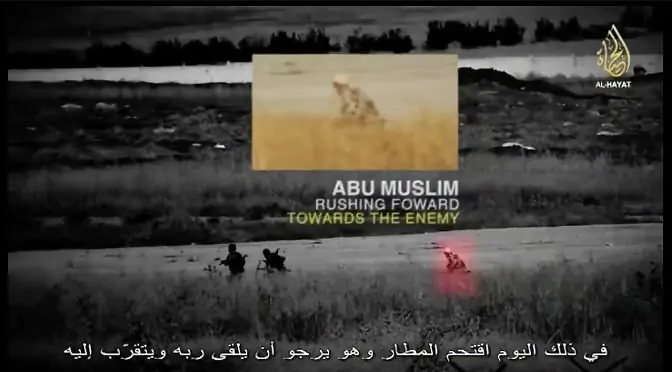Each week our scan collects weak – and less weak – signals…
Read the 26 March scan →
World – As the world wonders about the motivation that could prompt the copilot of Germanwings to crash a plane, and while the hypothesis of a terrorist intention is most probably on everyone’s mind, a very large number of crowdsourced articles this week were about the 26 March 2015 Saudi-led coalition’s attack in Yemen on the advancing Houthi Shi’a militias. These strikes are an answer to a call by Yemeni President Hadi. According to AFP/Reuters (see featured article), Saudi Arabia, Bahrain, Kuwait, Qatar and the United Arab Emirates announced the attack, while the U.S. said it would bring logistical and intelligence support. Egypt also participated, and, according to Saudi Arabia, “Jordan, Morocco and Sudan”, as well as Pakistan, wish to participate. Meanwhile, the U.S., which, until now had not participated in the Iraqi army and Shi’a militias offensive against the Islamic State in Tikrit, Iraq, announced that it will now provide air support to the Iraqi operation.
Taken together, these two developments most obviously underline how much of a powder-keg and quagmire the overall situation in the Middle East has become. If one add to them the recent debate over a potential intervention in Libya or not, then the decision to attack in Yemen also points out that the United Nations (U.N.) and the world order are currently facing a potentially critical situation. Focusing on Yemen, Jay Ulfelder explains in a detailed and clear way in his 22 March “Watching the States Get Made“, the intricacies of the current normative world order, as embodied by the U.N., as well as, sometimes the double language that needs to be used to see it continue. Indeed, to be internationally legitimate, any attack on another country should be authorised by the U.N. If the situation in Yemen was discussed at the U.N. security council on 22 March, however, no attack nor strike was authorised, as shown by the official Statement by the President of the Security Council (UN document). Yet, the attack now has taken place, thus locating it knowingly outside the current international legitimacy framework, despite a letter informing the U.N. in advance of the attacks.
On the contrary, in Libya, the refusal to intervene was respected.
The risk entailed not only by the illegitimate attack but also by the different behaviours is to see the U.N. and the even imperfect order it embodies start – or continue – to disaggregate and crumble. This danger, on top of the very complex situation in Yemen and in the larger MENA region, most probably is what underscores the worried statement issued by China, stating its “deep concern”, and recalling it “urges all parties to act in accordance with United Nations Security Council resolutions on Yemen, and to resolve the dispute through dialogue.”
If the decisions of a system and the norms that uphold it are respected only from time to time, when it suits actors according to their national interest, then it enhances the probability to see this system becoming increasingly an empty shell. As pointed out by Ulfelder mixed motives and double language are not new. However, what is enhanced now is the utter disregard into which a U.N. decision has been held (for Yemen), as well as the proximity in time of two opposite responses to U.N. decisions (regarding Libya and Yemen), which thus highlights the preeminence of national interests.
It may well be that the situation in the MENA region is too dangerous, too fluid and too complex to accommodate a system that thrived during the stable bipolar world of the Cold War. Should the U.N. know a fate similar to the League of Nations, we might then see emerge a different world, ruled first by the balance of power and complex “games of thrones”, where war is not outlawed anymore, beyond declarations that will increasingly be seen as empty or hypocritical.
Economy – The large increase in junk bonds and debts related to the shale oil industry, considering low oil prices is notably highlighted this week.
Tech and weapons – The featured article for this section focuses again on China and a potential “space weapon threat”.
Environment and Energy – First of all, two worrying signals, one regarding the impact of manganese pollution on bees, which are crucial as pollinators, and another one regarding the possible slowing down of the Ocean’s conveyor belt. Then, Dr Daum focuses on water, as March 22, 2015 was the UN sponsored World Water Day. Among others, this reminds us how fashionable events may be integrated within a strategy of delivery of strategic foresight and warning to enhance the odds to see them heard. Dr Daum thus underlines that, according to the UNICEF statistics, “despite important worldwide gains in improving access to reliable drinking water, 748 million people still do not have access to clean water. One major area of water use that was discussed this week is with activities related to the coal industry: mining, washing, and cooling of power plants. Greenpeace has called for using less water on coal production and use and more for basic human needs. Meanwhile, another important article on RealClimate discussed the recent meeting in Schloss Ringberg, Germany on the sensitivity of climate to increasing level of CO2. There was some important discussion among scientists with new and developing information about sensitivity factors.”
The Weekly is the scan of The Red (Team) Analysis Society and it focuses on national and international security issues.
The information collected is crowdsourced. It does not mean endorsement but points to new, emerging, escalating or stabilising problems and issues.
If you wish to consult the scan after the end of the week period, use the “archives” directly on The Weekly.

Featured image: “C-band Radar-dish Antenna”. Licensed under Public domain via Wikimedia Commons.









